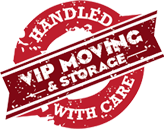So you’ve decided to chase your entrepreneurial dreams under the California sun? LA’s booming startup scene beckons, but for those with a business in tow, a regular move just won’t cut it. Here’s how to navigate the unique challenges of an entrepreneur’s relocation to Los Angeles, and how VIP Movers can be your secret weapon.
Location, Location, Location: Picking Your Power Base
Los Angeles offers a diverse landscape for entrepreneurs. Tech hubs like Playa Vista or Hollywood attract venture capitalists, while the Arts District pulsates with creative energy. VIP Movers goes beyond just boxes – their commercial division can help you navigate zoning regulations, connect you with realtors specializing in commercial spaces, and ensure your new office is ready to hit the ground running.
Lights, Camera, Action!: Setting Up Your Shop
Moving permits, furniture procurement, IT setup – the logistics can be overwhelming. VIP Movers offers comprehensive business relocation services, tailored to your specific needs. From dismantling and reassembling workstations to coordinating furniture delivery and installation, they’ll ensure a smooth transition that minimizes downtime.
Building Your Dream Team: The LA Talent Pool
LA boasts a talented workforce, but attracting the right people requires knowing where to look. VIP Movers can connect you with recruitment agencies specializing in your industry, helping you find the perfect talent to fuel your LA startup dream.
Network Like a Star: Connecting in the City of Angels
Building connections is vital for any entrepreneur. VIP Movers can facilitate introductions to local business organizations and industry networking events, helping you integrate into the LA business scene quickly.
Beyond the Bottom Line: LA’s Perks for the Enterprising Soul
LA isn’t all work and no play. A healthy work-life balance is essential. VIP Movers concierge services can help you discover hidden gems, from trendy co-working spaces with ocean views to after-work networking events that double as sunset cruises.
Stay tuned, future LA entrepreneur! We’ll be delving into the best co-working spaces for different industries, exploring hidden gems that cater to the busy professional, and providing tips on navigating the unique challenges of LA’s business landscape. With VIP Movers by your side, your entrepreneurial journey in LA will be a success story, not a reality TV show filled with drama.


